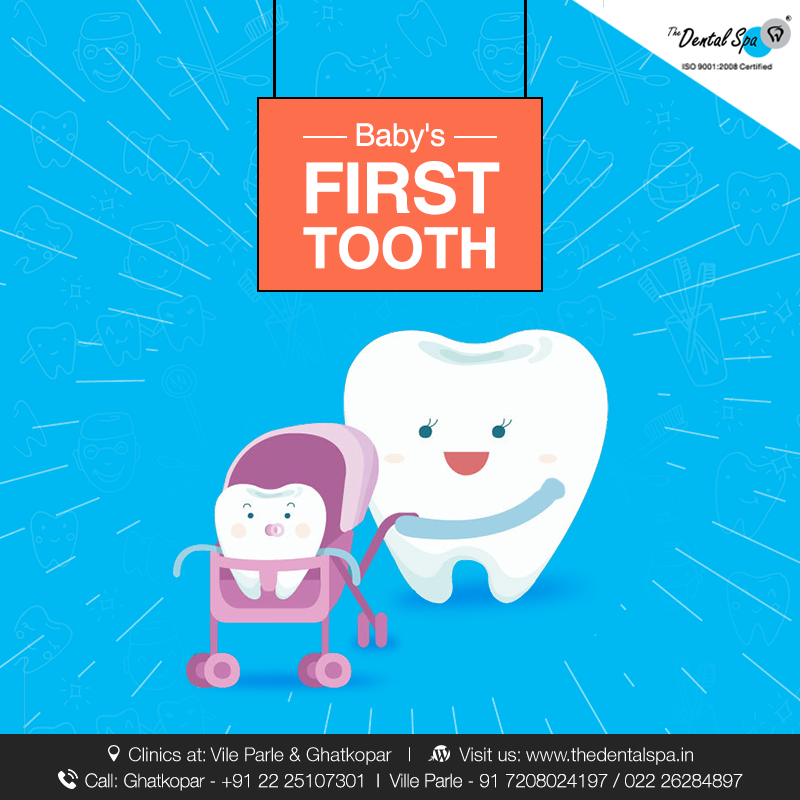Baby’s First Tooth
The eruption of the first teeth in a baby’s mouth is a big event, but teething can be stressful for both the baby and the parent. Babies may show signs of discomfort in the area where the tooth is coming in, the gums around the tooth may be swollen and tender, and the baby may drool a lot more than usual. And the more you know about teething, the better you can help your baby get through it. Milk teeth start erupting by the age of six months, although anytime between 6-9 months is considered normal.
The symptoms of teething aren’t the same for every baby, but they may include:
- Fussiness and crying
- A slightly raised temperature
- Gnawing or wanting to chew on hard things
- Lots of salivation
- Swollen, tender gums
- Changes in sleeping or eating patterns
Few facts you should know about your baby’s first tooth:
- The first teeth to pop up are usually the two bottom front teeth.
Although patterns may vary among babies, primary teeth usually erupt in a predictable sequence. The two front bottom teeth come in first, followed by four upper front teeth called central and lateral incisors. Two lower lateral incisors are next, followed by first molars. The four canine teeth erupt next to the upper and lower lateral incisors. Finally, the remaining molars come in to make a complete set of 20 primary teeth.
- Soothe a Teething Baby.
Parents can help ease the teething pain by massaging their baby’s gums with clean fingers in slow circular movements. Allow your baby to suck on a clean, cold, moist cloth, or provide a pacifier.
A baby’s body temperature may slightly rise when teething; however, according to a 2016 study in Pediatrics, a true fever (temperature over 100.4 degrees Fahrenheit or 38 degrees Celsius) is not associated with teething and is actually a sign of an illness or infection that may require treatment. Many children, however, will have no problems at all when their teeth come in!
- Take care of their oral hygiene.
As a part of the oral hygiene, parents must clean child’s mouth even before the first tooth appears. Wipe the gums off after each feeding with a warm, wet washcloth or a dampened piece of muslin cloth wrapped around your finger to ensure that the teeth/ gum pads do not stay coated with the residue of milk. Make sure to clean their tongue too to avoid mouth thrush.
- First dental appointment when the first tooth appears.
Make your baby’s first dental appointment after the eruption of the first tooth. Doctor’s recommend that all parents should take their children to see a pediatric dentist and establish a “dental home” by age one. A pediatric dentist will make sure all teeth are developing normally and that there are no dental problems.
- Use fluoride toothpaste only after the age of 3 years.
Children between ages 3 and 6 should use a pea-sized amount of fluoride toothpaste. Fluoride works to prevent cavities by reinforcing the tooth structure. However, use water and a soft toothbrush to brush their teeth before the age of 3 years.
Remember not to put your baby to bed while feeding him/her as it can lead to tooth decay.
Parents should monitor and assist their child while brushing until he or she is around 7 or 8 years old. When your child can write his or her name well, he or she also has the ability to brush well. We are sure these facts will help you keep your baby’s teeth happy and shining!
Visit us at http://thedentalspa.in/ or book your baby’s first dental appointment at The Dental Spa.






